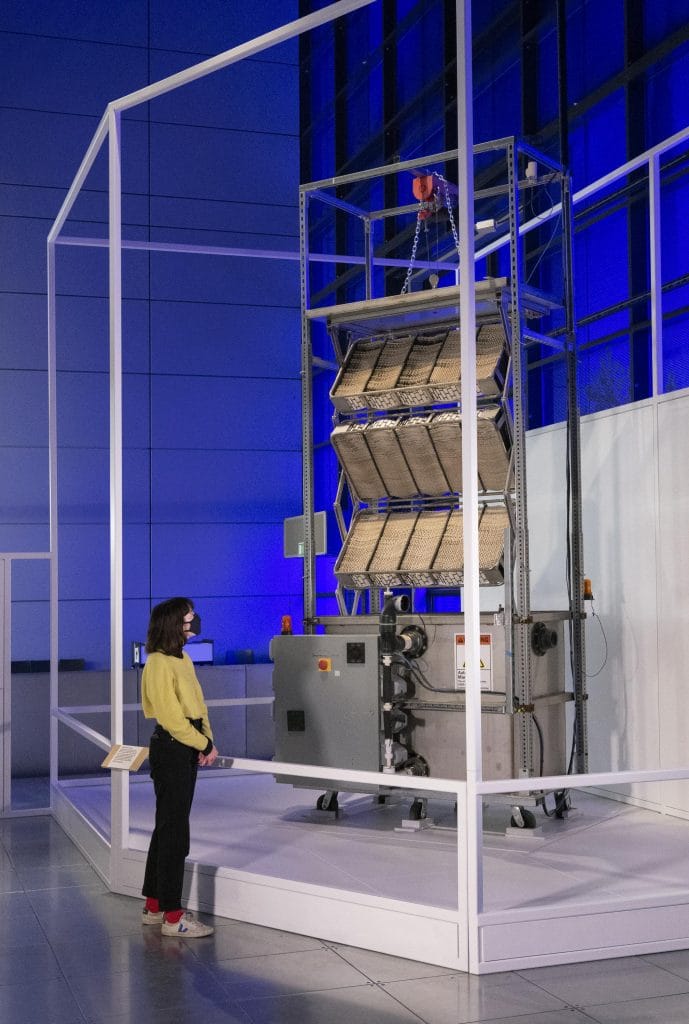Science Museum Exhibition: an Environment perspective
The exhibition, named ‘Our Future Planet’, showcases the potential of carbon capture in reducing the amount of carbon dioxide in the atmosphere

The exhibition, named ‘Our Future Planet’, showcases the potential of carbon capture in reducing the amount of carbon dioxide in the atmosphere. Carbon capture is the process by which carbon dioxide emissions from industrial processes are collected and stored before they enter the atmosphere. The diverse methods on display range from applications of hard engineering to nature-based solutions.
A direct air capture machine takes centre-stage in the exhibition hall. This technology was developed by the Swiss company, Climeworks. Each unit can remove 50 tonnes of carbon dioxide from the air annually. Companies and individuals can employ Climeworks to remove carbon dioxide on their behalf, enabling others to take ownership of their carbon dioxide emissions.
Ambient air enters the unit through a collector, following which carbon dioxide is removed through a filter. After the carbon dioxide is stored within the machine, the residual air is discharged from the unit. The stored carbon dioxide can then be used for commercial purposes such as manufacturing bracelets or carbonating fizzy drinks.
Engineering solutions were also presented such that they mimic the natural process in trees. Professor Klaus Lackner from Arizona State University designed a mechanical tree to capture carbon dioxide. The leaves of the tree are coated with carbonate-containing resin which combine with carbon dioxide to form bicarbonate. As the leaves move towards the base of the tree, they get wetted. Consequently, the bicarbonate reverts back to a carbonate form, releasing carbon dioxide into a storage chamber. When the lid of the base is opened, the leaves get air-dried before the carbon capture process is repeated. A prototype of the mechanical tree towers over all the other exhibits.
The pressing need for a massive storage space becomes evident after the carbon dioxide is captured. The UK is in a good position to employ carbon capture technology due to its close proximity to the emptying oil fields at the Northern Sea and Irish Sea. The Northern Endurance Partnership facilitates offshore transportation to sequester the UK’s captured carbon at sea.
To circumvent the requirement for storage, nature-based solutions can be employed to organically store carbon dioxide. The Carbfix project, originating from Iceland, offers a natural storage method by combining carbon dioxide with underground stone. Carbon dioxide is dissolved in water and then injected into reactive rocks which are rich in metals. These rocks function as a permanent store for carbon dioxide as the carbonates formed in this process are chemically stable.
To minimise the embodied carbon used in construction materials, civil engineers are starting to prefer the use of wood over concrete and steel. A model of a building with wooden frames and flooring is displayed in the hall. Such a building is set to be constructed at Goldsmiths, University of London with sustainably sourced timber.
Echoing the recently renewed call for tree planting, the exhibition highlights some forest management strategies. Good upkeep of trees in a forest will allow for their carbon-capturing power to be maximised. A soil respiration apparatus developed by the University of Birmingham is displayed at the exhibition. This device can be used to measure the carbon dioxide released by soil, roots and fungi in a woodland ecosystem. A falling branch during a tornado resulted in the dent seen on the apparatus.
The enthusiasm of the developers of these innovations was evident in the video presentations displayed around the exhibits. The next step will be to transform these laboratory-based innovations into mechanisms that work on a large scale. Our endeavour to reduce the amount of carbon dioxide in the atmosphere will also benefit from global policy and political will. The free exhibition will run till September 2022. Visit the Wellcome Wing, Level 0, at the Science Museum to learn how carbon capture systems can rescue our future planet.








